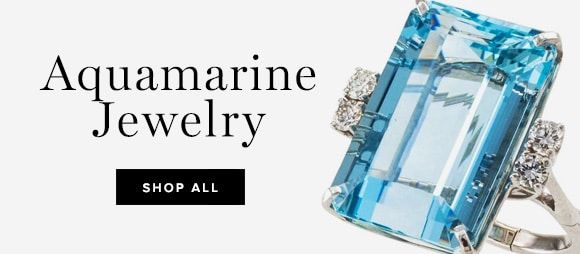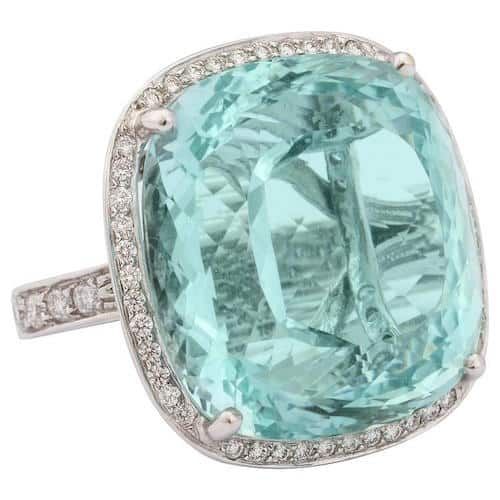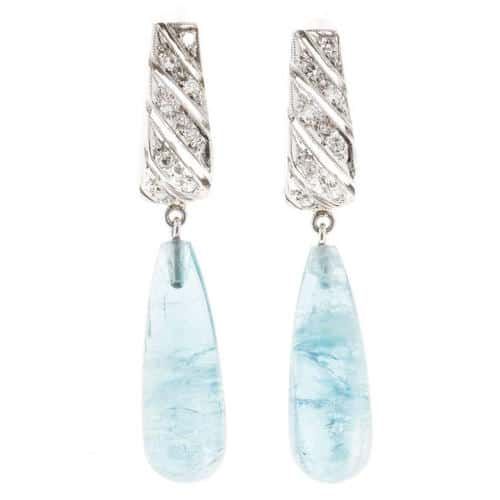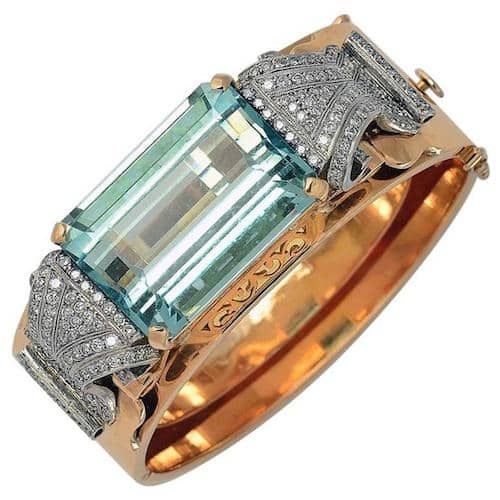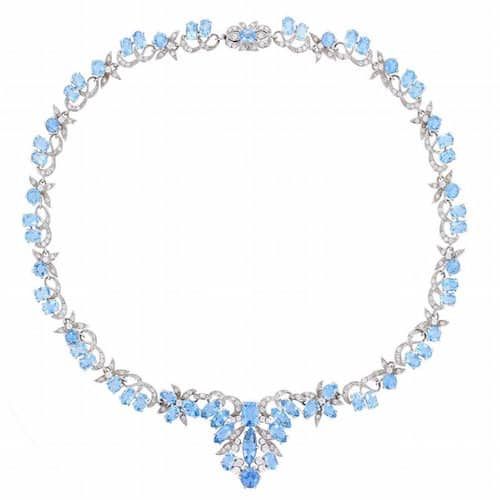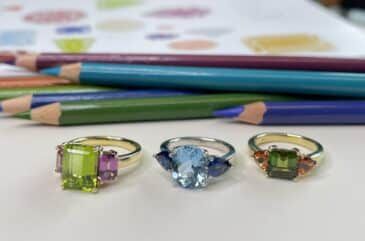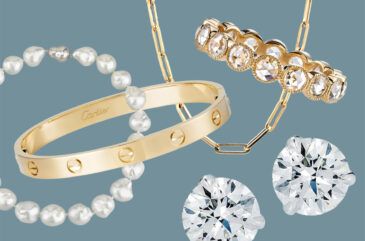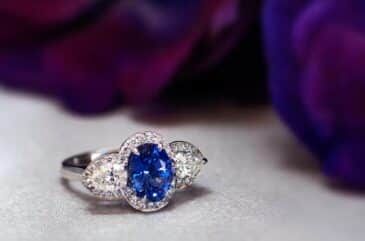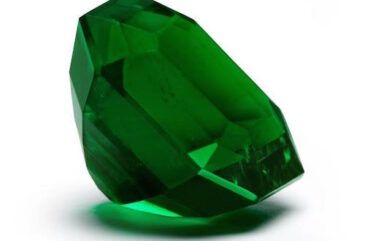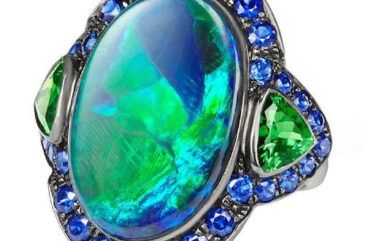As we approach spring (which officially arrives on March 20), it’s hard not to think about all the things we love about warm weather, like the sun and the sea. Perhaps the one gemstone that best embodies the glimmering blue of the ocean is aquamarine, not just in name but also in color. Aqua marina (latin for water and sea) is often crystal clear and blue. This March birthstone, affordable in price, belongs in everyone’s jewelry box.
Chemical Composition
Aquamarine is a precious gemstone from the mineral beryl family. Its cousin is the emerald. Like other beryl varieties, aquamarines are rated 7.5 to 8 on the Moh’s Hardness Scale. This means that they are soft enough for jewelers to cut to their client’s specs but also durable enough for daily wear. In their natural state, aquamarines are found in a six-sided columnar form. The largest aquamarine crystal ever discovered weighed 243 pounds. These aquamarine crystals are usually transparent and range in color from greenish-blue to a vivid sky blue. Sometimes. the greener aquamarines are heat-treated so that they develop a bluer hue. This will often add value to the stone as blue aquamarines are more desired than green.
Historical Origins
On land or sea, aquamarines feature prominently in many folk tales, including one about mermaids gifting aquamarine to sailors to protect them during sea voyages. Worn around sailors’ necks as an amulet, it kept them from getting seasick and, most importantly, from shipwrecks. Considered a symbol of courage by some, aquamarine amulets were also favored by Egyptian and Hebrew warriors during battle.
Aquamarine has also made appearances on some of the grandest of great dames. The Brazilian government gifted Eleanor Roosevelt with a 1,847-carat aquamarine in 1935 and Queen Elizabeth II received a sizable aquamarine upon her 1953 coronation; this stone is now the focal point of her aquamarine tiara. And renowned Tiffany & Co. designer Jean Schlumberger made a diamond Bow setting for a 148.5-carat aquamarine, which was originally exhibited at the 1893 World’s Columbian Exhibition, now in the collection of the Field Museum of Natural History in Chicago.
The Field Museum also has in its collection a magnificent 137-carat North American faceted aquamarine. This stone from Maine is the largest aquamarine discovered on the continent. Not to be outdone, the Smithsonian Institution’s National Museum of Natural History, has two important aquamarines in their collection: The 10,395-carat Dom Pedro aquamarine obelisk cut by German gem sculptor Bernd Munsteiner in 1992 is the world’s largest cut aquamarine and then there is the 1,000-carat Most Precious Aquamarine.
Geographic Sources
With the exception of that North American stone, all of the most prized examples of aquamarines that exists in the world today have come from the Minas Gerais region of Brazil. Minas Gerais is also where the 243-pound aquamarine crystal was mined. To this day this part of the world has the richest mines for this gemstone. Aquamarine mines also exist in Africa, specifically in Zambia, Nigeria and Mozambique. According to the Gemological Institute of America, Vietnam has recently become a producer of aquamarine as well.
